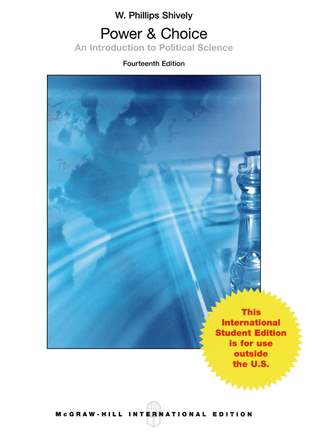書籍分類

Power and Choice: An Introduction to Political Science 14/e
作者:W. Phillips Shively
原價:NT$ 900
ISBN:9781259071256
版次:14
年份:2014
出版商:McGraw-Hill
頁數/規格:480頁/平裝雙色
版次:14
年份:2014
出版商:McGraw-Hill
頁數/規格:480頁/平裝雙色
內容介紹 本書特色 目錄
- Description
This program provides a general, comparative introduction to the major concepts and themes of political science. The title of the book, Power & Choice, indicates a subsidiary theme that recurs at intervals. We may view politics as (1) the use of power or (2) the production of a public choice. Often one or the other is heavily emphasized in approaching the subject. Marxism emphasizes politics as the use of power, while pluralism and much formal modeling work emphasize the emergence of public choices.



